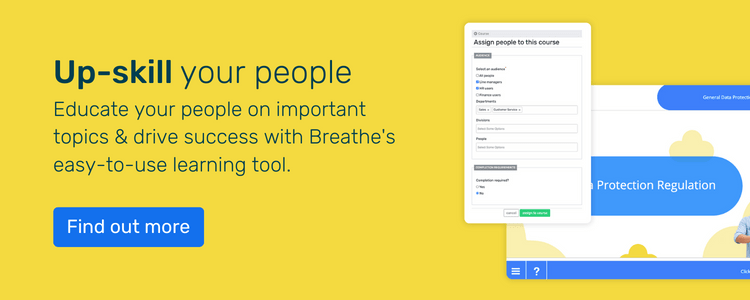Your SME is constantly growing, and your employees need to evolve with it too if they’re to meet the daily challenges it brings. A well-trained workforce can boost productivity and increase revenue.
This blog covers how small businesses can create an effective training programme.
What is a training programme?
A training programme is a structured series of training designed to help people understand a topic, or gain a certain skill or qualification.
What are the benefits of offering a training programme?
An employee training programme can give your people the tools to excel in their roles. It also helps them develop their skills and confidence. Training programmes can be a worthwhile investment because you’ll likely enjoy greater team productivity, and a happier, more motivated workforce.
How to create a training programme
Identify training needs
Before you set up your programme carry out a training audit. Work out what the company needs and what your staff need, because if neither side can see any benefit then you won’t get anyone engaged - no matter how hard you try.
Look for inefficiencies in your workplace that could be improved with training and put together a vision of what training looks like for your business.
Review learning principles
Everyone learns differently, so it makes sense that your training programme enables people to learn in a way that will engage them. It's useful to align learning with the objectives you want to achieve within your company, and with team members' own personal development objectives.
Develop learning objectives
It’s important to develop learning objectives because if you don’t know exactly you where want to go with the training, then it probably won’t work. Having an end goal is not enough - you need to effectively signpost it along the way.
Learning objectives should define what the individual employee will understand and be able to do at the end of the training. They're measurable steps employees will work toward to achieve an overall learning goal.
However, it’s vital that you define them not just for the individuals you wish to train, but for your company as a whole – how will their training impact on the company? What will each stage achieve for the business?
Plan training
Work out which training all employees need to have (e.g. information security, health & safety, company background/vision etc) and keep up to date with who's due to re-complete annual training by storing documents & training records on Breathe.
For role-specific training, liaise with teams to work out who needs to undertake which training (and when). Breathe's online learning tool, Learn, contains training courses covering information security, GDPR & more.
Find out how to find the right training provider for your business in our blog.
Implement training programme with employees
Keep track of your training programme and ensure all employees complete the necessary modules. You can implement a training programme that begins as new employees join the company, particularly those programmes that relate to health and safety, company culture and general procedures. Once an employee has completed a particular programme it’s important to get feedback from them and sign off their training.
Reviewing your training programme
It’s important to review your training programme regularly to make sure that it's working as best it can for your people. Asking for regular feedback will help you monitor whether it's useful for your team, or where improvements can be made.
Log training records on Breathe with our easy-to-use, secure cloud-based system. Why not take out a free trial today?

Author: Aimée Brougham-Chandler
An IDM-certified Digital Copywriter (2023) & English Language & Literature graduate (BA Hons), Aimée is Breathe's Content Assistant. With 3 years' content marketing experience, Aimée has a passion for writing - and providing SME HR teams with solutions to their problems. She enjoys delving into & demystifying all things HR: from employee performance to health and wellbeing, leave to company culture & much more.





